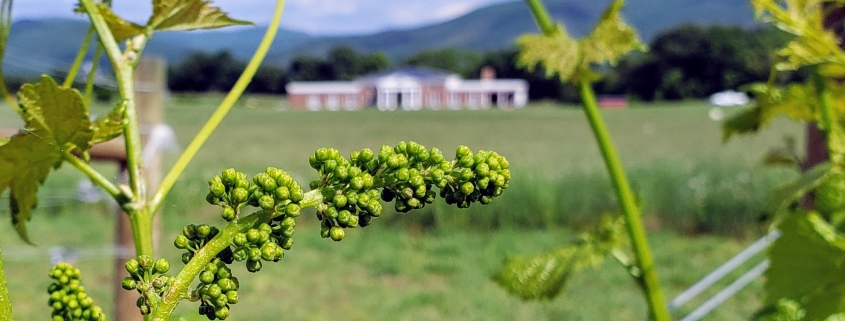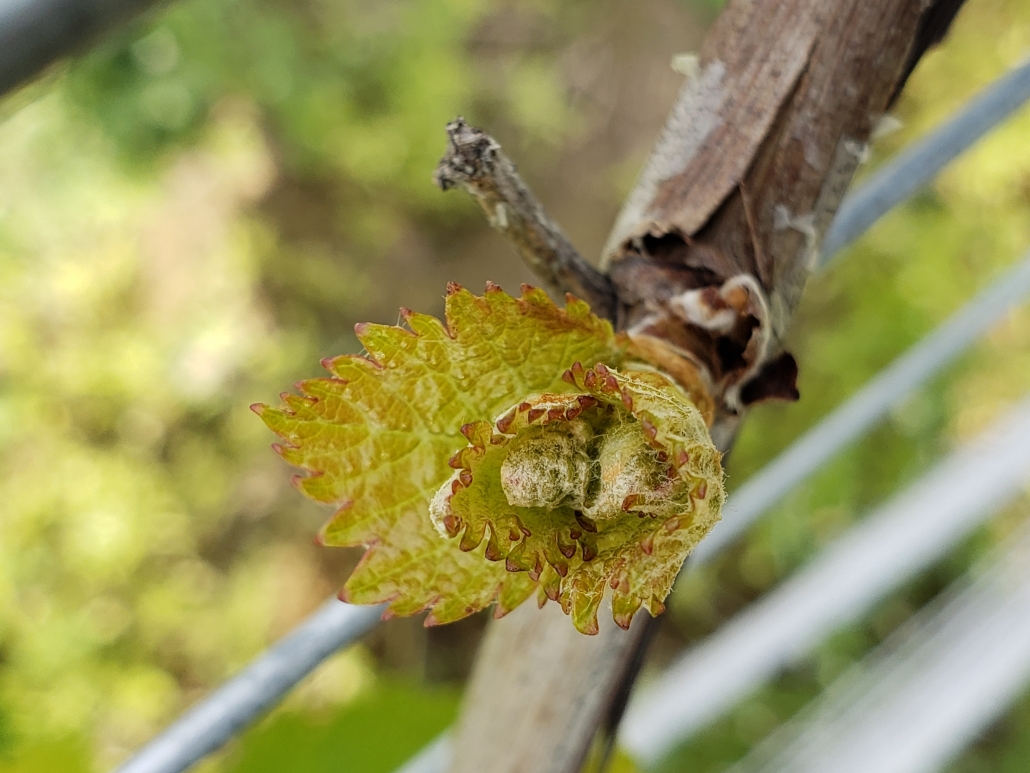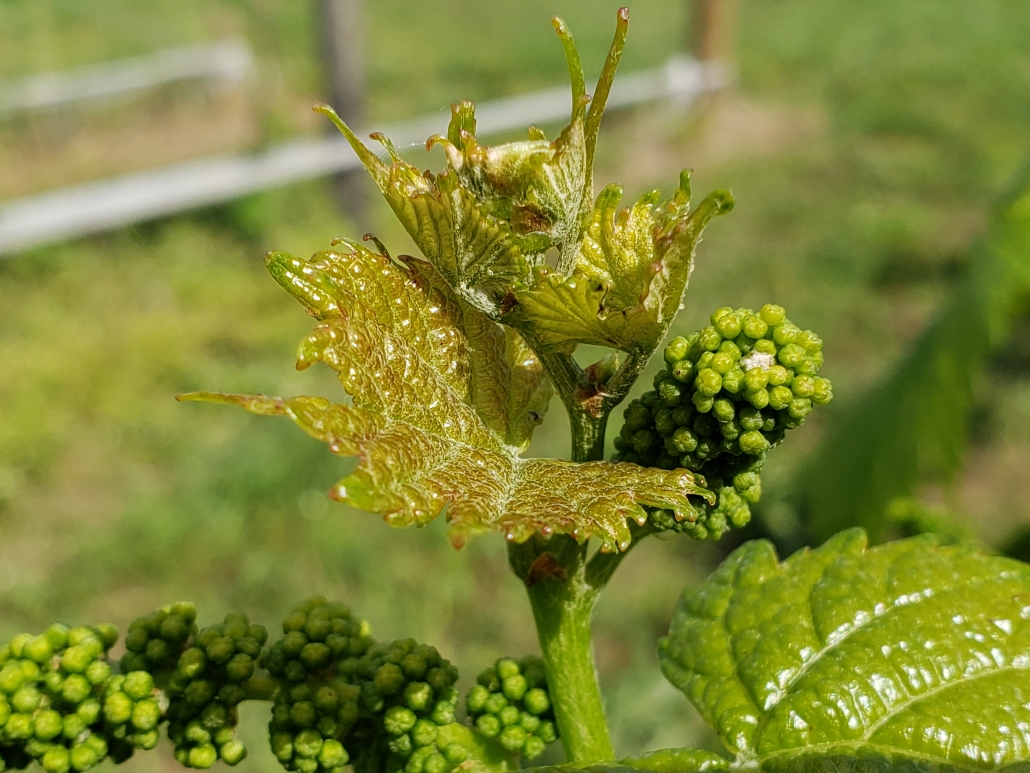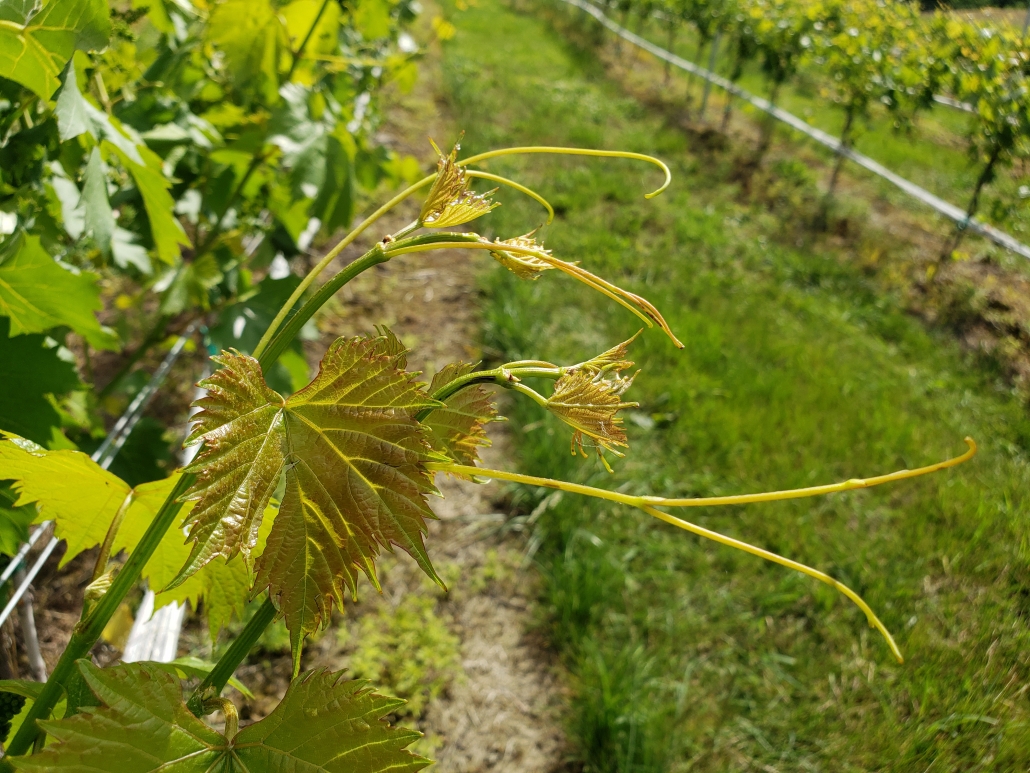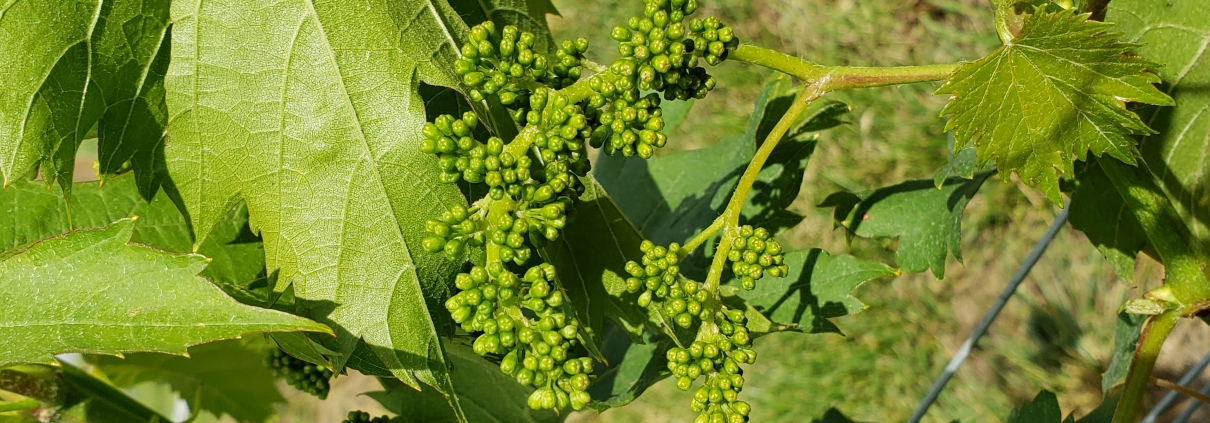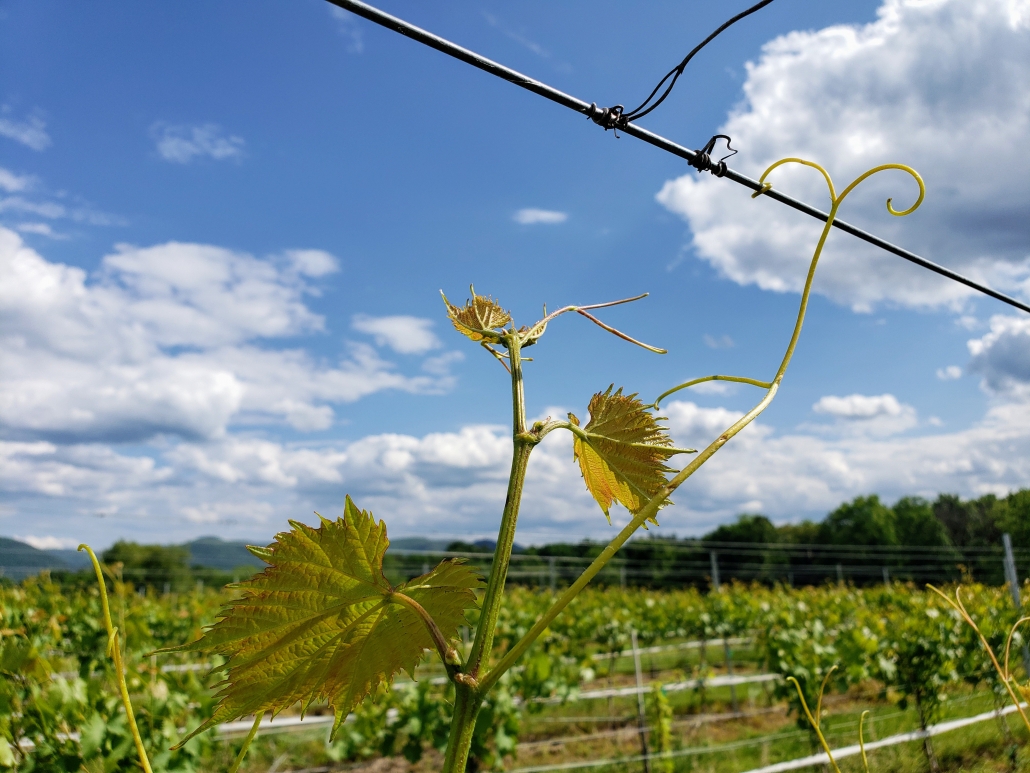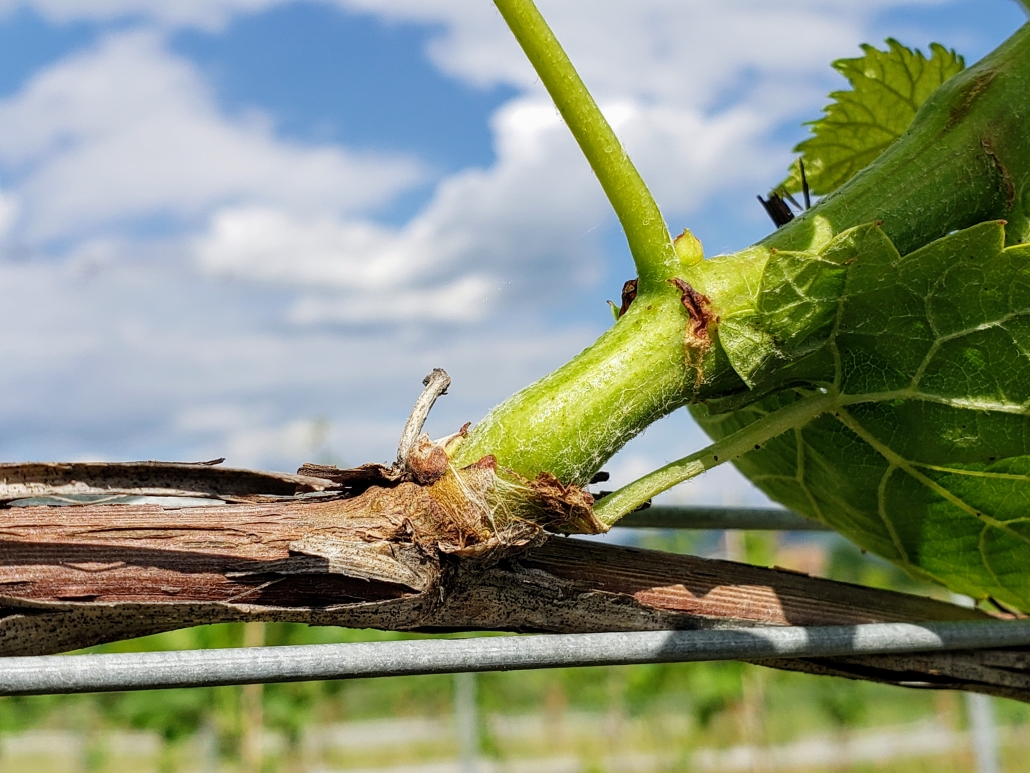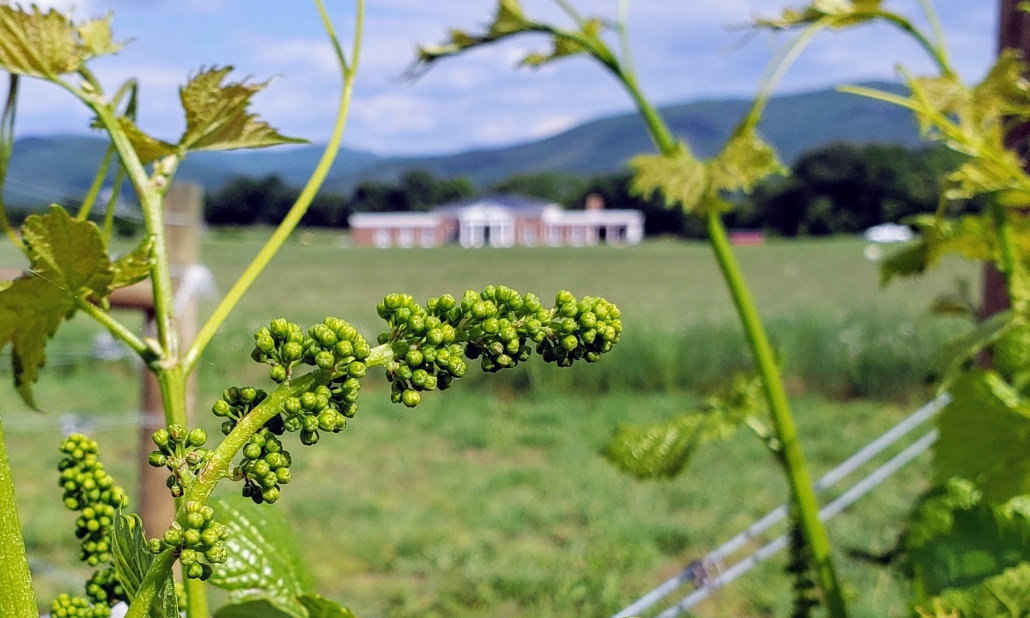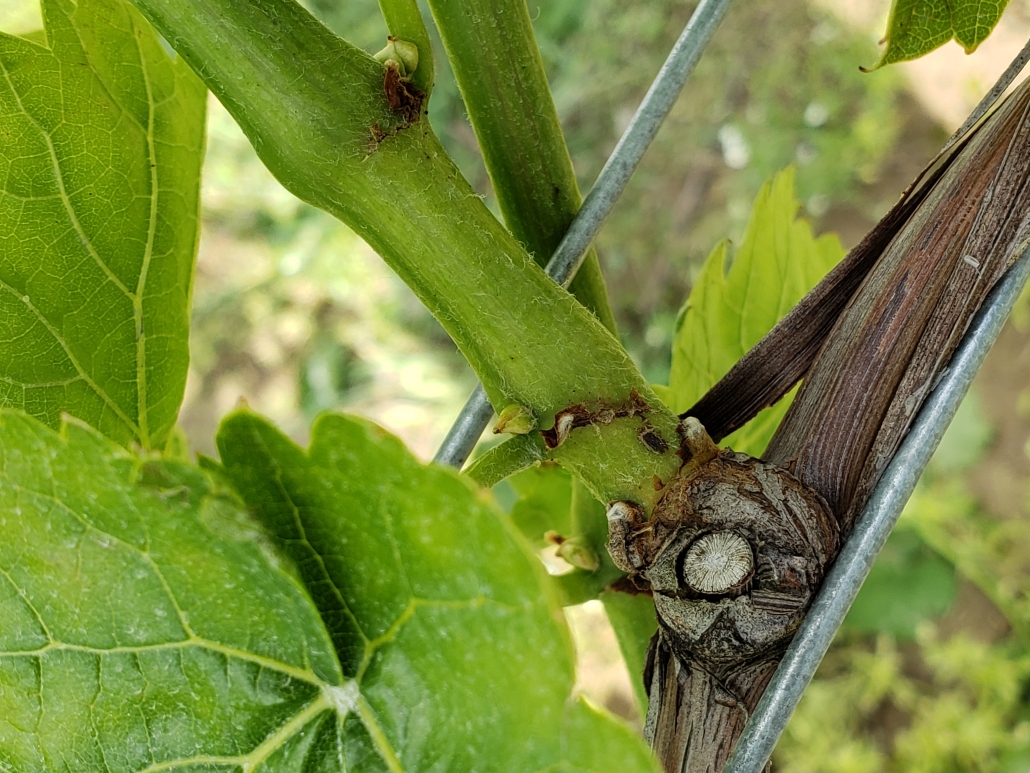A Spring in my Step, and Clusters on my Vines!
I may be an old fellow and slowing down a bit, but there is one thing I will never get tired of: springtime! Sure, I let those bunnies hop through my yard without barking at them as much, and I haven’t chased too many skunks this year (Mom is really appreciative of this change), but I am still sure to take her on a walk every morning through the vines, so she can get her exercise, and I can sniff out the new changes in my vineyard.
I’m not the only one to perk up in the springtime; this is also the time of year that vines start waking up from their winter slumber. A few weeks ago, I wrote about how we prune at the start of the season, but that is just one of many changes that is happening around here. When the spring sunshine starts to hit the vines, the starches that were stored over the winter are converted into sugars and sap starts moving through the vines. This wakes all of the sleeping parts of the grapevine, and the dormant buds become noticeably larger. The buds swell and eventually break open to unfurl the beautiful gold-green leaves that have been forming since last year’s growing season. The shoots that grow from these newly broken buds grow quickly, and vineyard managers strip the vines of their excess leafage at this time in order to focus the energy of growth into the two shoots that have been selected to cultivate this year.
After a few weeks, clusters of inflorescence develop. These look like miniature grape clusters on the vine, but if you look closely, they are actually tightly formed flower buds. After opening, the flowers will last for as short a time as two days in warm sunny weather or as long as a month in cool, damp areas. If the weather is cool and damp during the flowering period, the number of berries per bunch will be fewer, and each grape will have less seeds – resulting in smaller fruit at full ripeness. After this self-pollination period is over, the flowers fall off and the berries start to form. At the same time that these visual changes are happening, the buds that will vine and fruit next year are beginning to form beneath the surface of the grapevines. Sunny days now will result in more fruit-bearing next year.
Anywhere from a month to two months after the flowers have dropped off and the fruit has appeared on the vines, the berries will begin the veraison process. During this stage, the red grapes change color from green to red and other signs of maturity begin to surface. For the next month and a half, the grapes will continue to increase in sugar, color, and flavor compounds. As veraison slows to a halt, the green outer coverings on the vines will turn brown and bark-like (called lignification), and harvesting will begin as soon as the grapes have reached their desired brix and acidity levels.
The leaves will stay on the vine collecting energy to be stored over the winter in order to start the whole process again next spring.
Stay tuned on our social media pages for pictures of the grape flowers as they come into bloom, and keep your fingers crossed for dry and sunny days ahead!

